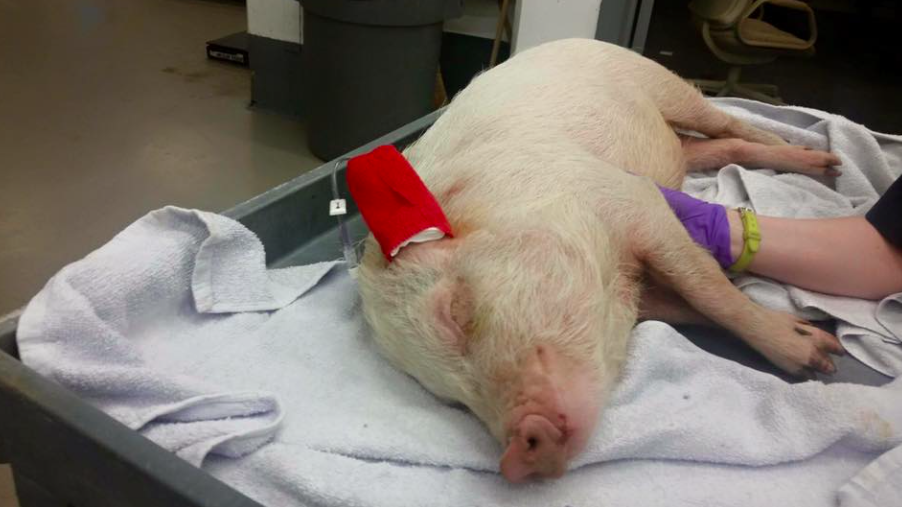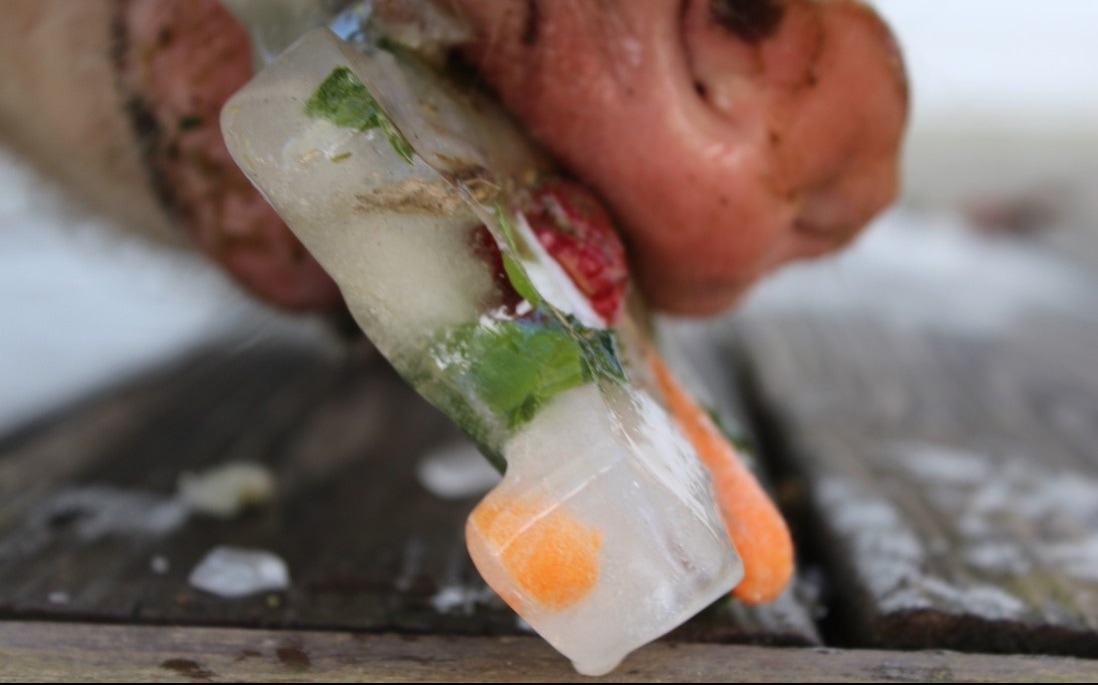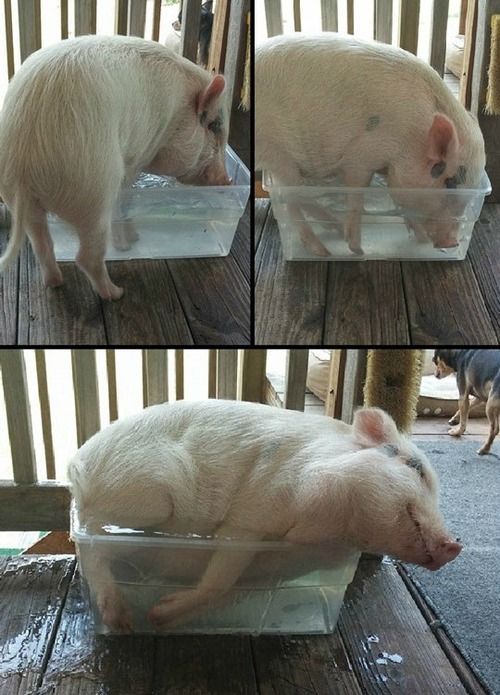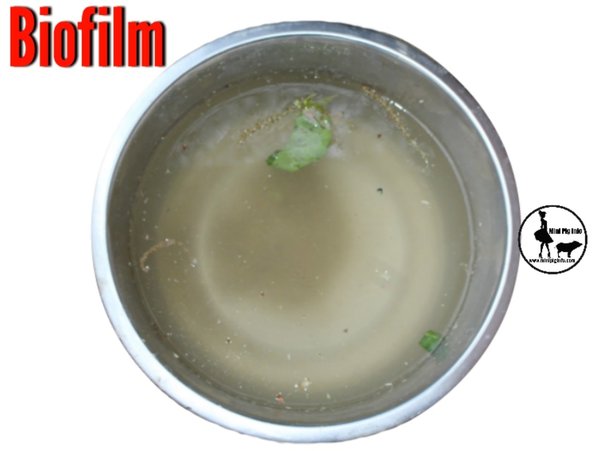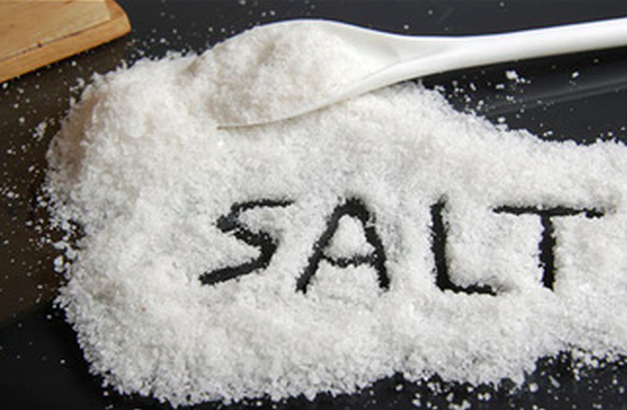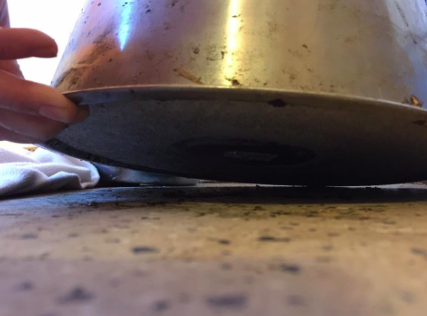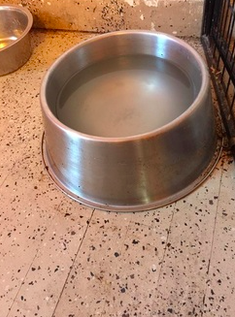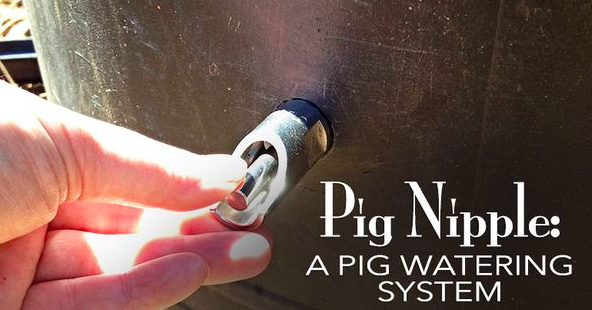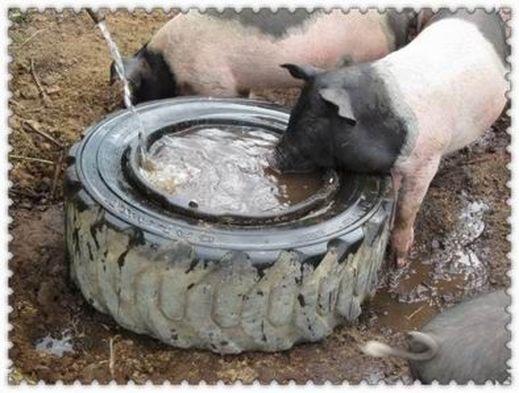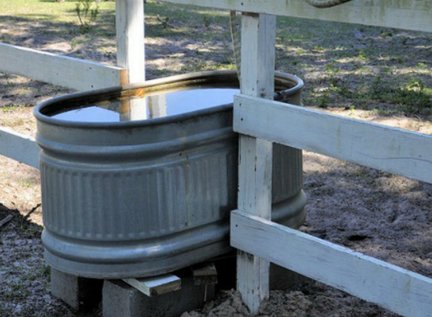The importance of water and pigs
Water is of significant importance to pigs. It is actually one of the most important nutrients for them. The development of independent ingestive behaviors (eating and drinking) follows different pathways and both are controlled by different motivational systems in young pigs. Drinking is defined as a voluntary oral ingestion of liquids, but overall hydration is the total of consumption of water, which includes what may be added to their feed or other things like frozen treats.
It was discovered early on that piglets will drink more water if it is in a bowl versus a watering system like nipple or press level drinkers and is significantly more effective if there are auditory bubbling cues present. This drinking behavior can develop within hours of birth when piglets require supplemental nutrition or hydration, particularly in response to high environmental temperatures. Between birth and 4 weeks, water intake increases as a function of age but consumption per kilogram of body weight typically remains constant. Immediately after weaning, piglets often increase their time at the drinker, possibly to alleviate feelings of hunger (by increasing gastric fill) that develop in response to low feed intake or to relieve gastrointestinal discomfort associated with a sudden shift in feed composition and form. As feeding becomes established after wearing and feeding routines are established, drinking becomes prandial and most water is consumed at meal times.
Water is obviously used for hydration. What you may not know is that water also stabilizes the water pH, most metabolic functions require water, adjustment of body temperature, helps to keep electrolytes in balance, supports digestion, improves microbial balance and quite frankly, they can't live without it. Water makes up 80% of a piglets empty body weight and according to The Pig Site, 53% of a market pigs weight. I'm not sure where mini pigs fall in that category, but I would assume, much like humans, a large percentage of empty body weight is water as well. An animal can lose practically all its fat and over half of its protein and yet live, while a loss of one-tenth of its water results in death. It's estimated that pigs need somewhere between 2-8 liters of water a day.
Pigs consume most of their water by drinking. As we all know, pigs form a social hierarchy, or rank order, that can also affect accessibility of key resources, like the feed or water bowl, within their pen. In competitive situations, higher "ranked" pigs may have more access to feed and water. If multiple feeders and bowls are used and placed strategically in the pens, or pigs are separated during feeding times, this limiting resource will be reduced. (If you have a "bully" pig and one that will simply run away from conflict - separate them when they're eating and drinking so they have equal opportunities at meal times) Pigs affected with diseases require more water than healthy pigs of the same age and body weight. For example, water loss associated with diarrhea or increased water demands of an animal with a fever change the water requirements of a sick pig.
Below you will find additional information about water deprivation and tips to help you find creative solutions to be sure fresh water is always available.
Source: http://www.sites.ext.vt.edu/newsletter
It was discovered early on that piglets will drink more water if it is in a bowl versus a watering system like nipple or press level drinkers and is significantly more effective if there are auditory bubbling cues present. This drinking behavior can develop within hours of birth when piglets require supplemental nutrition or hydration, particularly in response to high environmental temperatures. Between birth and 4 weeks, water intake increases as a function of age but consumption per kilogram of body weight typically remains constant. Immediately after weaning, piglets often increase their time at the drinker, possibly to alleviate feelings of hunger (by increasing gastric fill) that develop in response to low feed intake or to relieve gastrointestinal discomfort associated with a sudden shift in feed composition and form. As feeding becomes established after wearing and feeding routines are established, drinking becomes prandial and most water is consumed at meal times.
Water is obviously used for hydration. What you may not know is that water also stabilizes the water pH, most metabolic functions require water, adjustment of body temperature, helps to keep electrolytes in balance, supports digestion, improves microbial balance and quite frankly, they can't live without it. Water makes up 80% of a piglets empty body weight and according to The Pig Site, 53% of a market pigs weight. I'm not sure where mini pigs fall in that category, but I would assume, much like humans, a large percentage of empty body weight is water as well. An animal can lose practically all its fat and over half of its protein and yet live, while a loss of one-tenth of its water results in death. It's estimated that pigs need somewhere between 2-8 liters of water a day.
Pigs consume most of their water by drinking. As we all know, pigs form a social hierarchy, or rank order, that can also affect accessibility of key resources, like the feed or water bowl, within their pen. In competitive situations, higher "ranked" pigs may have more access to feed and water. If multiple feeders and bowls are used and placed strategically in the pens, or pigs are separated during feeding times, this limiting resource will be reduced. (If you have a "bully" pig and one that will simply run away from conflict - separate them when they're eating and drinking so they have equal opportunities at meal times) Pigs affected with diseases require more water than healthy pigs of the same age and body weight. For example, water loss associated with diarrhea or increased water demands of an animal with a fever change the water requirements of a sick pig.
Below you will find additional information about water deprivation and tips to help you find creative solutions to be sure fresh water is always available.
Source: http://www.sites.ext.vt.edu/newsletter
Have you ever wondered what a pig drinking looks like?
A very special thank you to Nicole Leonard and Eli the pig for this awesome video!
My Pig is not a big water drinker or won't drink water
Hydration is one of the most important aspects to keep your pig safe and healthy during the hotter months. A lot of people have difficulty in getting their pig to drink enough water, I have also experienced this myself. One method to entice you pig to drink more is to add a small amount of juice to the water to make the water more enticing for your pig child. I have found that the flavored water drops typically used for bottled water is a great way to flavor the water using less sugar and some have zero calories (like Dasani flavored water drops). The brand isn't of importance, but the sugar and caloric intake is. Just keep in mind that once you start adding flavor to the water, whether that be natural fruit juice or flavored water drops, your pig will likely expect this until the end of time and may turn his/her nose up at plain water. So do NOT use anything if you do not need to. I've also found adding ice to the water causes my pig to drink additional water, she really likes ice. In order to get her in her pool to cool off, I add Cheerios (because they float) or grapes to help lead her to a spot to cool off. The same can be done for the water bowls. One additional thing I've found that works and is relatively inexpensive is buying the "chilly willy" or ice pops that you buy in a clear plastic tube in a liquid form and freeze. Once frozen, it serves as something that can help cool them down on super hot days, but more importantly, it also provides hydration for a pig that isn't a big water drinker. Plain water is always best though. Dehydration leads to multiple other problems with pigs including kidney issues, UTI's (urinary tract infections) as well as constipation that can be further complicated by bowel obstructions. So please make sure your pig is drinking enough water.
My pig will not drink water! We hear this many times. Here are a few suggestions to change this….
My pig will not drink water! We hear this many times. Here are a few suggestions to change this….
- Change the type of water you offer them. Get one of those filtration pitchers or some bottled water. If they drink that, I would suggest you change the water you drink as well. You may even want to go as far as to have your water tested. There are many types of water in homes all over the world, some contain high amounts of minerals while others contain high amounts of city additives. If your pig is refusing to drink the water, he/she may know something you don't. Try bottled water and as mentioned above, maybe even a filtered water system...if this works and your pig drinks the purified or bottled water, there may be something wrong with your house tap water.
- Add a bit of juice to the water, as small of an amount as possible, which they will still drink. Juices, like apple, pineapple, or grape are always a hit, but you must take into consideration the amount of sugar and adjust the overall diet as necessary. Juices like lemon, cranberry, or orange are wonderful because they are also acidic and are great for the overall health of the pig. The same adjustments must be made to the overall diet. You can also try the flavored water drops designed for bottled water, most are calorie free. (The flavored water drops can be used in small amounts but typically contain an artificial sweetener which isn't good for people or pigs, however, the super small amount used shouldn't cause any issues)
- Put edible "treats" into the water, but again, adjust the overall diet for the increased calories, if necessary. You can float cheerios or other types of cereal. You can dice carrots and toss them in, you can put spinach or grapes in a kiddie pool and allow them to have some fun while also cooling off and drinking water as they find the floating (and sunken) treasures.
- Feed vegetables that are high in water content. Cucumbers, celery (if they will eat it), or romaine lettuce (NEVER iceberg, too much cellulouse), zucchini or yellow squash, watermelon are all good choices. (in moderation)
- In the summer months, freeze fruits and veggies into ice and give them as treats. Again, adjust the overall diet for the increase in calories if needed. You will even hear some people say giving "extras" is what causes obesity in pigs, and obviously treats should be fed in moderation, however, you do what you have to do in order to keep your pig hydrated. You can simply give ice cubes, water with a small amount of fruit juice or only add greens in the ice treats. Enrichment is also a very important part of your pigs life. This provides a little of each- hydration and enrichment.
- Ensure the water or water bowl isn't dirty. Pigs will turn up their nose to water that is gross or smells bad. Biofilm can accumulate in a dirty water dish also and can cause your pig to avoid drinking out of it. (the biofilm itself can also cause problems) Read more about biofilm below.
- Soak pellets to increase hydration/water intake. Soaking them has a couple of benefits, 1. It causes the pellets to swell allowing your pigs belly to feel fuller faster versus having to rely on them drinking water to get them to that state and 2. Obviously, this provides additional water in their diet.
My pig drinks excessive amounts of water
On the other hand, there are some pigs who can't seem to get enough water. Sometimes this is due to an underlying medical condition while other times it is simply because your pig is bored and drinking water has become more of a pastime or habit. If your pig is drinking more than usual—some pigs even drink so much and so quickly, that they will vomit/regurgitate it right back up—this can be a sign of a medical issue. It can be a long diagnostic process to figure out why a pig is drinking and urinating larger volumes, and sometimes it is difficult to ultimately find an answer. Remember each pig is individual and each pig will eat varying amounts of food as well as drink different volumes of water. If you have 2 pigs, one may have completely different dietary habits than the other, including the amount of water that they each drink. Polydipsia, along with increased volume of urination, can be caused by the following, amongst other things:
- Psychogenic water consumption- Pigs with this condition consume far more water than is required for normal body maintenance. Boredom may lead to psychogenic water consumption. Other causes of increased water consumption, such as cystitis or other urinary tract diseases should also be checked. To do this, your veterinarian can test your pig's urine both before and after a 12-hour water fast. Young pigs usually outgrow this condition. In some cases, water is restricted and offered only with meals. If this treatment is used, care must be taken to prevent salt poisoning
- Diabetes insipidus- Diabetes insipidus has nothing to do with the type 1 and type 2 diabetes that is related to blood sugar. Diabetes insipidus (DI) is a disorder that is caused by an imbalance of a hormone called vasopressin which is secreted by the pituitary gland, which controls kidney function. The person or animal will experience excessive thirst and the production of a large amount of urine. An electrolyte imbalance is almost always associated with diabetes insipidus. The minerals, sodium, calcium and potassium are three forms of electrolytes that are part of the internal pump that maintains fluid balance within the body. When these electrolytes get out of balance, physical symptoms of fatigue, body aches and pains will manifest. The urine output related to diabetes insipidus can range from 0.5 gallons per day to 3 or more gallons per day, depending on the severity of the disorder. Your vet can check blood work to see if this is a possibility.
- Kidney insufficiency
- Diabetes mellitus
- Adrenal hormone disease (such as excess cortisol production, called Cushing’s disease; or cortisol deficiency, called Addison’s disease)
- Liver disease
- Infection
- Abnormal electrolytes (high calcium, low potassium)
- Treatment with certain drugs (corticosteroids, diuretics, etc.)
Biofilm
Bowls that are not properly cleaned, but only "topped off" can harbor bacteria that leads to illness. This is more commonly referred to as biofilm.
Everything has a "shelf life", so to speak. So yes, water can go bad. Another problem with water is the hidden dangers you may not be aware of. Have you ever rubbed your fingers on the inside of your pigs’ water dish and it was slimy? The slimy stuff that coats the side of your pet’s water bowls (and sometimes even floats around on top) is called “biofilm”. Biofilm is a collection of organic and inorganic, living and dead materials collect on a surface. It is made up of many different types of bacteria bound together in a thick substance, forming a glue like consistency and adhere to a surface. Other places that you might’ve seen biofilm are on your shower curtain and even in your own mouth! Many pet parents are guilty of simply refilling the water bowl over and over without a wash and this becomes a wonderful environment for biofilm to soak around in.
Since biofilm can develop on a surface in just hours, wash your pet’s food bowl after every meal and his water bowl twice a day. If your pet spends time outside, you should have a water bowl in your yard. You might need to clean that dish even more frequently, especially in hot weather, which provides a perfect environment for algae and bacteria to grow. This biofilm will also sometimes cause your pet to shy away from the water dish causing dehydration issues such as constipation or electrolyte imbalances. As we know with pigs, lack of water causes a systemic reaction and can really do some damage in a short amount of time. This film will also grow inside the kiddie pools we typically keep out in the summer months for our precious pet pigs. So that will need to be dumped and cleaned routinely as well.
When biofilm is introduced into your pet’s system, it can cause urinary tract, bladder and ear infections, so it’s something to consider, when thinking about the health and safety of your pets. If you wouldn’t drink water from a glass that has been sitting for a week having never been washed out during that time, why would you expect that to be ok for your pig? The good news is that with proper cleanliness, you can reduce the chance of biofilm in your pet’s system, keeping your pet happily hydrated and biofilm-free.
Proper cleaning of bowls
Generally, you should to wash your pig’s food and water bowls after every use. While this may seem excessive, imagine treating yourself the same way and eating every meal out of an unwashed dish. Once again, gross! If you haven’t been cleaning your pig’s food and water bowls regularly, it’s never too late to start. On cheaper bowls made of plastic, it’s not uncommon to find mold growth if you’ve let them sit out long enough. It’s time to throw those bowls out and buy new bowls for a fresh start. You’ll want to use a cloth or sponge that is only used for your pig’s bowls. Dish soap, water and some elbow grease, along with a thorough rinse, will get the bowls clean. If your pig’s bowls are stainless steel, you can clean them in the same manner but avoid harsh chemicals and antibacterial products to prevent rusting. Running them through a cycle in the dishwasher is also an excellent way to keep your pig’s food and water bowls clean. When it comes to sanitizing pig bowls, the dishwasher wins. While hand washing with soap and hot water certainly will get the bowls clean, the dishwasher takes it a step further. Most bacteria that get collected on the bowls require scalding hot water at 140° Fahrenheit to fully remove and kill it. If you try to attempt to wash your pig’s bowls by hand at this temperature you’ll get burned. Don a couple of pairs of rubber gloves if you’re sans dishwasher, and crank that hot water! Remember to inspect your pig’s bowls for scratches. Deep scratches can be a home for bacteria that can make your pig sick. Replace your pig’s food and water bowls when necessary to keep your pig healthy and happy.
Everything has a "shelf life", so to speak. So yes, water can go bad. Another problem with water is the hidden dangers you may not be aware of. Have you ever rubbed your fingers on the inside of your pigs’ water dish and it was slimy? The slimy stuff that coats the side of your pet’s water bowls (and sometimes even floats around on top) is called “biofilm”. Biofilm is a collection of organic and inorganic, living and dead materials collect on a surface. It is made up of many different types of bacteria bound together in a thick substance, forming a glue like consistency and adhere to a surface. Other places that you might’ve seen biofilm are on your shower curtain and even in your own mouth! Many pet parents are guilty of simply refilling the water bowl over and over without a wash and this becomes a wonderful environment for biofilm to soak around in.
Since biofilm can develop on a surface in just hours, wash your pet’s food bowl after every meal and his water bowl twice a day. If your pet spends time outside, you should have a water bowl in your yard. You might need to clean that dish even more frequently, especially in hot weather, which provides a perfect environment for algae and bacteria to grow. This biofilm will also sometimes cause your pet to shy away from the water dish causing dehydration issues such as constipation or electrolyte imbalances. As we know with pigs, lack of water causes a systemic reaction and can really do some damage in a short amount of time. This film will also grow inside the kiddie pools we typically keep out in the summer months for our precious pet pigs. So that will need to be dumped and cleaned routinely as well.
When biofilm is introduced into your pet’s system, it can cause urinary tract, bladder and ear infections, so it’s something to consider, when thinking about the health and safety of your pets. If you wouldn’t drink water from a glass that has been sitting for a week having never been washed out during that time, why would you expect that to be ok for your pig? The good news is that with proper cleanliness, you can reduce the chance of biofilm in your pet’s system, keeping your pet happily hydrated and biofilm-free.
Proper cleaning of bowls
Generally, you should to wash your pig’s food and water bowls after every use. While this may seem excessive, imagine treating yourself the same way and eating every meal out of an unwashed dish. Once again, gross! If you haven’t been cleaning your pig’s food and water bowls regularly, it’s never too late to start. On cheaper bowls made of plastic, it’s not uncommon to find mold growth if you’ve let them sit out long enough. It’s time to throw those bowls out and buy new bowls for a fresh start. You’ll want to use a cloth or sponge that is only used for your pig’s bowls. Dish soap, water and some elbow grease, along with a thorough rinse, will get the bowls clean. If your pig’s bowls are stainless steel, you can clean them in the same manner but avoid harsh chemicals and antibacterial products to prevent rusting. Running them through a cycle in the dishwasher is also an excellent way to keep your pig’s food and water bowls clean. When it comes to sanitizing pig bowls, the dishwasher wins. While hand washing with soap and hot water certainly will get the bowls clean, the dishwasher takes it a step further. Most bacteria that get collected on the bowls require scalding hot water at 140° Fahrenheit to fully remove and kill it. If you try to attempt to wash your pig’s bowls by hand at this temperature you’ll get burned. Don a couple of pairs of rubber gloves if you’re sans dishwasher, and crank that hot water! Remember to inspect your pig’s bowls for scratches. Deep scratches can be a home for bacteria that can make your pig sick. Replace your pig’s food and water bowls when necessary to keep your pig healthy and happy.
Salt Toxicity/Water deprivation/Sodium ion toxicosis
This is a common problem in pigs. The occurrence of sodium ion toxicosis is related to water intake is is almost always related to water deprivation caused by inadequate water supply or no fresh water being available. The likelihood of toxicosis will also increase with increased dietary salt, but the condition can also occur when rations contain normal levels of added salt too. It has also been associated with the feeding of whey another milk byproducts. Sodium ion toxicosis may occur after water deprivation of only a few hours, but in most cases, the time exceeds 24 hours. Water deprivation can occur in any season. In the summertime, obviously it's hot outside and a pig can easily turn their bowl over to provide themselves with somewhere cool to lay down. This opens the door for other potentially life threatening conditions like overheating or heat distress in addition to water deprivation. The cold seasons have their own problems too, in the winter time, frozen water can be an issue that causes sodium ion toxicosis.
The initial clinical signs are thirst, anorexia and constipation followed by central nervous system involvement. Intermittent convulsions can start within 1 to several days after water deprivation and may be exacerbated by rehydration. This is why it is most important to hydrate SLOWLY whenever water deprivation/salt toxicity is suspected. Affected pigs do not usually have a fever and may wander aimlessly and appear to be blind or deaf. In the later stages, pigs become comatose, often laying on their sides with continuous paddling. Most affected pigs die within a few days. Some pigs that appear unaffected may succumb later from polopencephalfmalacia. Salt poisoning from eating excessive salt or brine will typically cause vomiting and diarrhea as well. There have been a handful of cases successfully treated and the pig(s) survived. However, because it is often misidentified or unknown that water deprivation occurred, treatment is delayed until there is no chance of recovery.
Diagnosis is best accomplished by establishing that water deprivation occurred, which can be difficult in some cases. Necropsy findings may reveal an absence of ingest, gastritis, constipation, or very dry feces; rehydration exacerbated deaths may have stomach distended with water.
WATER….WATER…..WATER!!!!!!!!!!!!!!! Although a certain amount of sodium in the body is needed for it to function properly, too much can cause serious issues in pigs. Be sure there is ALWAYS a fresh water source.
The initial clinical signs are thirst, anorexia and constipation followed by central nervous system involvement. Intermittent convulsions can start within 1 to several days after water deprivation and may be exacerbated by rehydration. This is why it is most important to hydrate SLOWLY whenever water deprivation/salt toxicity is suspected. Affected pigs do not usually have a fever and may wander aimlessly and appear to be blind or deaf. In the later stages, pigs become comatose, often laying on their sides with continuous paddling. Most affected pigs die within a few days. Some pigs that appear unaffected may succumb later from polopencephalfmalacia. Salt poisoning from eating excessive salt or brine will typically cause vomiting and diarrhea as well. There have been a handful of cases successfully treated and the pig(s) survived. However, because it is often misidentified or unknown that water deprivation occurred, treatment is delayed until there is no chance of recovery.
Diagnosis is best accomplished by establishing that water deprivation occurred, which can be difficult in some cases. Necropsy findings may reveal an absence of ingest, gastritis, constipation, or very dry feces; rehydration exacerbated deaths may have stomach distended with water.
WATER….WATER…..WATER!!!!!!!!!!!!!!! Although a certain amount of sodium in the body is needed for it to function properly, too much can cause serious issues in pigs. Be sure there is ALWAYS a fresh water source.
Troubleshooting water bowl problems
My pig will drink water, BUT, the bowls are always empty.
- Use tip proof bowls, if your pigs are outside and they tip over anything you try to use.
- Get a kiddie pool and make sure there is fresh water put in there everyday.
- If your pigs bowl is frequently empty when you return home, get a bigger bowl.
- Keep several sources of water available for the pig and this will help to ensure that your pig is getting enough water during the day. Have several bowls scattered throughout your yard, if you need to, so there is easy access to fresh water at all times.
- Put the water in a container sunk into the ground so that the pigs can't crush or smash it up.
- Or put the water in a container sunk into the ground so that the pigs can't crush or smash it up.

